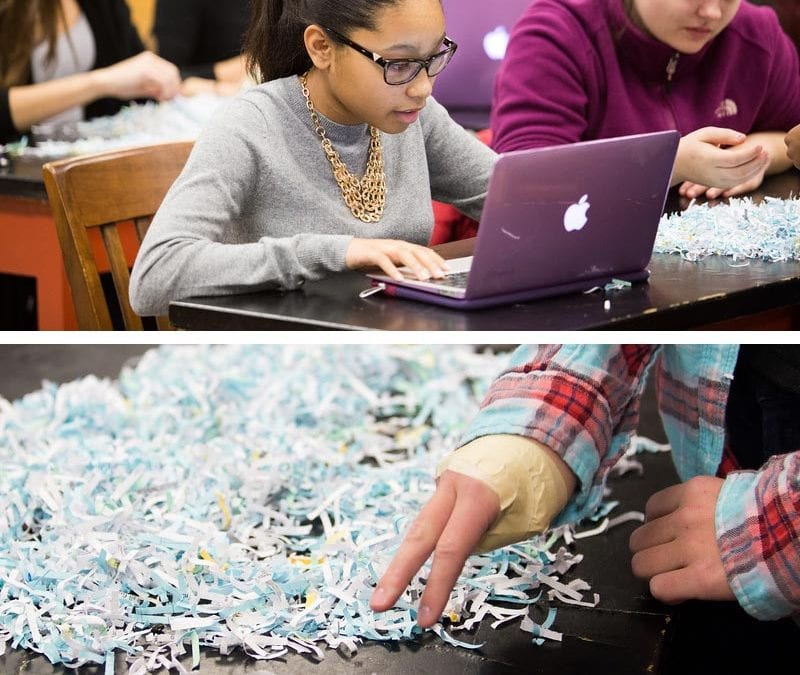Biology I is a Life Sciences course for ninth grade students. To learn more, check out the Upper School Science and Engineering curriculum.
[wc_divider style=”dashed” line=”single” margin_top=”” margin_bottom=””]
Students in Biology I created shredded paper “habitats” on their desks and hunted for “prey” hidden inside. The lab was a demonstration of the effect that predators have on diversity, and how they are part of the natural selection process.
[wc_button type=”primary” url=”http://mfs.smugmug.com/Upper-School/Predator-Prey/” title=”View Photos from the Simulation” target=”_blank” position=”float”]View Photos from the Simulation[/wc_button]
Science Teacher Drew Newman shared some insights into why he teaches the lab:
Why are students’ fingers taped together?
To give a little edge to the “prey” in the simulation. Humans have thumbs, which make it easy to gather things in our hands. If a student can just systematically clear part of the desk from left to right, the color of the beans doesn’t give them any “advantage.”
Why are the beans hidden in shredded paper?
Also to add complexity to the “hunting” process. Sometimes, I vary the color of the shredded paper, and sometimes I have students work on white, or red, or brown surfaces as well.
What are students recording in Excel?
The spreadsheet is designed so that students just need to enter the numbers of the colored beans they’re gathering. The numbers of survivors — and the gene pool they bring into the future — is automatically calculated so that the diversity of the survivors’ offspring can be determined.
What does your class learn from the lab?
It seems like a simple exercise, but it really works at modeling a complex system, and it works well for both ninth grade and AP Biology. There are multiple outcomes, where either black, white or red is favored and, in any given class, you tend to see all three patterns. This helps the students realize just how complex and diverse nature can be.

